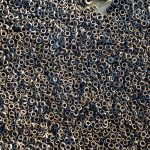In the quest for environmental remediation, particularly in transforming brownfields into greener, healthier spaces, one method has been gaining significant attention – phytoremediation. This intriguing process involves using plants to clean contaminated soils, making it a potentially effective, eco-friendly, and cost-efficient way to restore polluted sites. From scholars’ works indexed on Google to on-site applications, phytoremediation has become a topic of interest in environmental science.
Understanding Soil Contamination
Soil contamination, often seen in brownfield sites, poses significant environmental and health risks. These sites are often previous industrial or commercial areas where the potential presence of hazardous substances, pollutants, or contaminants, including heavy metals, could complicate redevelopment or reuse efforts.
A lire en complément : What’s the Impact of Virtual Tutors on UK’s Distance Education?
Contaminated soil is not just an environmental issue. It’s a significant health concern as well. Heavy metals and other pollutants can leech into groundwater or be absorbed by plants, which subsequently enter the food chain. This is why remediation is not simply a choice but a necessity.
In this context, phytoremediation emerges as a promising solution, using specific plant species to remove, stabilize or transform contaminants present in the soil and groundwater.
Lire également : How Can Urban Wildlife Overpasses Reduce Roadkill Incidents in the UK?
The Science Behind Phytoremediation
Phytoremediation hinges on the ability of certain plants to absorb, sequester, and metabolize various contaminants, including heavy metals and other pollutants. These plant species, often referred to as ‘hyperaccumulators’, can tolerate and accumulate high concentrations of specific metals in their biomass.
The process starts with the planting of these hyperaccumulator species on the contaminated site. As the plant grows, it absorbs the contaminants through its roots, which then accumulate in the plant’s shoots and leaves. Once the plant reaches maturity, it is harvested and properly disposed of, effectively removing the pollutants from the site.
The effectiveness of phytoremediation depends largely on the type of pollutants present and the plant species used. For instance, sunflowers have been used effectively to remove lead, while Indian mustard plants are known to absorb cadmium.
Advantages of Phytoremediation
Phytoremediation holds several advantages over traditional soil remediation methods. Firstly, it is more cost-effective. Traditional remediation methods, such as excavation and landfilling or incineration, can be very expensive. Phytoremediation, on the other hand, requires fewer resources, making it a more economically viable option.
Secondly, phytoremediation is a non-invasive method. Traditional techniques can often disrupt the site’s ecosystem, whereas phytoremediation enhances it. It promotes biodiversity and can even improve the aesthetic appeal of the site.
Moreover, the biomass produced during the process can be harvested and used for different purposes. For instance, if the absorbed contaminants are non-toxic, the biomass can be used as a biofuel.
Real-World Applications of Phytoremediation
Many successful applications of phytoremediation have been documented worldwide. For instance, in the U.S., phytoremediation was used to clean up a former shooting range in Massachusetts contaminated with lead. Over the span of a few years, sunflowers were grown, harvested and safely disposed of, significantly reducing lead levels in the soil.
In China, a large-scale project used Indian mustard plants to successfully decontaminate a site polluted with cadmium.
These real-world applications provide strong evidence of the efficacy of phytoremediation in treating contaminated sites. They not only underscore the practicality of this method but also point to a greener, more sustainable approach to environmental remediation.
The Future of Phytoremediation
With the escalating environmental concerns, the need for effective and eco-friendly remediation technologies has never been greater. Phytoremediation, with its multiple benefits, offers a promising route towards a sustainable future.
Scholars across the globe are delving deeper into this field, exploring new plant species and their contaminant-removal abilities. This surge in research, coupled with successful real-world applications, is likely to lead to more widespread adoption of phytoremediation.
The effectiveness of phytoremediation, however, does not negate the need for preventative measures. Minimizing soil contamination at the source is crucial. Still, for existing contaminated sites, phytoremediation offers a viable, sustainable solution that can help restore the health of our soils and, in turn, our planet.
Emerging Challenges and Limitations of Phytoremediation
Despite the numerous advantages of phytoremediation, it’s important to acknowledge that this method also comes with some challenges and limitations. One of the main challenges is time. Phytoremediation, owing to its nature, is a long-term process. Unlike traditional remediation methods, which can yield immediate results, phytoremediation can take several growth cycles before significant results are seen. This might be discouraging for those seeking swift solutions to soil contamination.
Another challenge relates to the depth of contamination. The effectiveness of phytoremediation largely depends on the plant species used and their root structure. Most plants used in phytoremediation have shallow root systems, making it difficult for them to reach contaminants that are deeply embedded in the soil.
Moreover, phytoremediation might not be effective for all types of contaminants. While many plant species can absorb heavy metals and certain organic pollutants, they might not be able to handle more complex, non-biodegradable pollutants.
Lastly, the disposal of harvested plants that are loaded with contaminants can pose a challenge. If not handled properly, these plants could pose a risk to human health and the environment. Hence, proper disposal methods need to be developed and maintained.
Despite these challenges, scholars and practitioners are optimistic about the future of phytoremediation. They are constantly researching ways to overcome these limitations, such as using genetically modified plants with deeper roots or developing innovative disposal techniques.
Conclusion: Phytoremediation as a Promising Solution for Brownfield Restoration
In conclusion, phytoremediation presents a promising, eco-friendly method for brownfield site restoration. Its use of plant species to remove heavy metals and other contaminants from the soil can prove to be a game-changer in environmental remediation.
While it does have its challenges and limitations, the potential of phytoremediation is undeniable. It is a cost-effective solution that promotes biodiversity and improves the aesthetic appeal of sites. Additionally, its applications can extend beyond remediation, potentially providing sources of biofuel.
The numerous studies and successful real-world applications, as documented on platforms like Google Scholar, provide solid evidence of phytoremediation’s effectiveness. As research in this field scales up, it is expected to become an even more prevalent method for dealing with contaminated soils.
However, it is important to remember that while phytoremediation is a powerful tool for dealing with existing contamination, the ultimate goal should be to minimize soil contamination at the source. This will require concerted efforts from all sectors of society, from regulators to industries and communities.
In the midst of growing environmental concerns, phytoremediation offers a glimmer of hope. With continued research and development, it might just be the key to unlocking a future where brownfield sites are transformed into green, healthy spaces.






